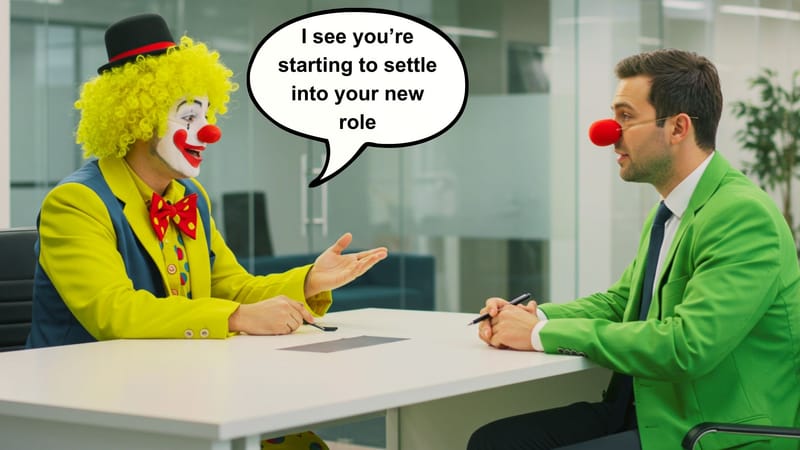What is workforce and talent management?
To ensure business objectives and achievements are being met, it's vital the right people in an organisation with the appropriate skills, and knowledge is placed in specific roles to support this.
The practice framework endures a broad set of tasks reliant on involving successfully with the organisation's employees.
Task activities
- Planning
- Recruitment
- Onboarding
- Learning & Development
- Performance measurement
- Succession Planning
The goal of workforce and talent management
The initial goal of workforce and talent management is to ensure organisations understand the future forecast and demand for services. This can be done by establishing the organisation's milestones to achieve this.
The right people

Getting the right people with the skills and competencies to deliver the services at the right time is key. This will also ensure the following objectives can be met.
- Quality improvement
- Closing knowledge and skill gaps
- Prevents backlogs of work
- Rework caused by defects
- Time improvement
It's vital with the fast transformation of organisations and their practices, as well as automation, needs the right people to support the capabilities to move with the digital economy and improve speed to market.
The Strategy
The strategy of workforce and talent management needs organisations to enable leaders and managers to focus on a people strategy in order to create effective and actionable people where the strategy can be executed at various levels within the business.
A well-planned strategy will support and identify the types of roles required and associated knowledge, skills and attitudes needed to provide the essential service and the need to keep the organisation running on a daily basis.
The advancing technologies should also be considered when leadership and change need the capacity and capabilities required to ensure the business is growing steadily for its ultimate success.
Developing the workforce
Developing a business's workforce and talent is something most organisations are looking at constantly with the advancing market and is not considered new. There is an increasing demand for automation and repeatable work and roles are changing all the time. Because of this, it's essential workforce and talent management should be taking it upon themselves, such as leaders and managers on every level throughout the organisation to improve the way forward.
ITIL definitions
What is Organizational velocity?
- The speed, effectiveness, and efficiency with which an organization operates.
- Organizational velocity influences time to market, quality, safety, costs, and risks.
- Competencies The combination of observable and measurable knowledge, skills, abilities, and attitudes that contribute to enhanced employee performance and ultimately result in organizational success.
- Skills A developed proficiency or dexterity in thought, verbal communication, or physical action.
- Ability The power or aptitude to perform physical or mental activities related to a profession or trade.
- Knowledge The understanding of facts or information acquired by a person through experience or education; the theoretical or practical understanding of a subject.
- Attitude A set of emotions, beliefs, and behaviours towards a particular object, person, thing, or event.
Workforce and talent management activities
Activities cover a wide range of different areas and are carried out by a number of roles for particular purposes as listed below.
Workforce planning - The organisation needs to translate the strategic plan to ensure the desired objectives include business capabilities and then into competencies and roles.
Recruitment - The skills of new employees and contractors need to fill the gaps related to desired capabilities
Performance measurement - The delivery of regular performance measurement and assessments against established job roles based on pre-defined competencies.
Personal development - An employee’s use of published job roles and competency frameworks to proactively plan personal growth and advancement.
Learning and development - Targeted education and experiential learning opportunities using various formal and non-formal methods.
Mentoring and succession planning - Formal mentoring, engagement, and succession planning activities provided by leadership.
What is the contribution of workforce and talent management to the service value chain?
The following areas need the practice of being involved in the key chain activities and focus on where improvement to activities can be made.
Plan - A specific output is workforce planning in the value chain activity where leadership and management need to evaluate the organisation's current capabilities when planning the future requirements for resources when also considering products and services defined by the service portfolio
Improve - To constantly improve the success of the organisation, skilled and motivated people are required and its imperative that workforce and talent management are aware and have an understanding and fulfilment of these requirements
Engage - Workforce and talent management is closely linked to this value chain activity. It's important to cross-link and work with practices familiar under the ITIL umbrella such as relationship management, service request management, and service desk to understand and forecast changing service demand requirements, and how this will impact and direct workforce planning and talent management activities.
Design and transition - Talent management is important to this value chain activity. Specific focus is given to knowledge, skills, and abilities related to systems and design thinking.
Obtain/build - Talent management focuses specifically on knowledge, skills, and abilities related to collaboration, customer focus, quality, speed, and cost management.
Deliver and support - Specific focus by talent management is given to knowledge, skills, and abilities related to customer service, performance management, and customer interactions and relationships.






